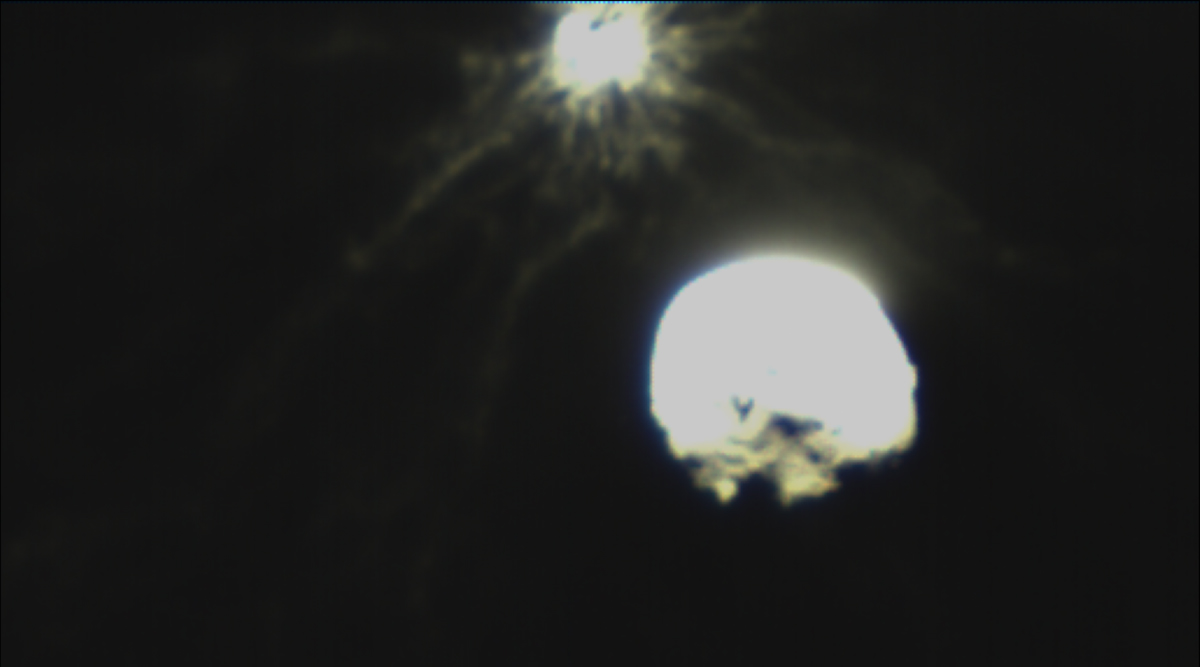Humanity’s first planetary defence test mission got off to a good start when NASA’s DART spacecraft successfully crashed into the asteroid Dimorphos in a planned collision at 4.44 AM IST on September 27. Now, the Italian Space Agency has released images of the collision captured by its LICIACube a few minutes after the collision.
Le prime spettacolari immagini realizzate da @LICIACube dell’impatto di #DARTMission su #Dimorphos @mediainaf @NASA
Guarda la fotogallery👇https://t.co/2JWJxvD5TF pic.twitter.com/eJ8M6rt2oK
— Agenzia Spaziale ITA (@ASI_spazio) September 27, 2022
Images such as these will be crucial in helping scientists understand the structure and composition of Dimorphos, which will be important to ascertain how effective DART was in diverting the asteroid. Although only three photos were released by the Italian Space Agency, more photos could be released in the coming days.
 The Italian Space Agency’s LICIACube took this image minutes after DART’s crash with Dimorphos. The bigger asteroid in the picture is Didymos. (Image credit: ASI/NASA)
The Italian Space Agency’s LICIACube took this image minutes after DART’s crash with Dimorphos. The bigger asteroid in the picture is Didymos. (Image credit: ASI/NASA)
The purpose of NASA’s DART mission is to test whether a “kinetic transfer” method of asteroid mitigation can be a viable strategy in case an asteroid threatens the Earth. The method refers to using the impact of a massive object like a spacecraft to divert asteroids. DART’s crash should have nudged Dimorphos slightly and subtly changed its orbit around Didymos, the larger asteroid in the binary system.

 The Italian Space Agency’s LICIACube took this image minutes after DART’s crash with Dimorphos. The bigger asteroid in the picture is Didymos. (Image credit: ASI/NASA)
The Italian Space Agency’s LICIACube took this image minutes after DART’s crash with Dimorphos. The bigger asteroid in the picture is Didymos. (Image credit: ASI/NASA)
Currently, the Didymos binary system, which hosts Dimorphos, is within less than 11 million kilometres of Earth and dozens of telescopes stationed across the world are trained at the system to observe it. In the coming weeks, scientists will precisely measure the orbital change that happened to Dimorphos to understand how effectively DART deflected the asteroid.
Dimorphos does not really present a threat to the Earth but scientists will compare the data from DART’s crash with it to the data from the many computer-generated to ascertain whether this kinetic impactor method is an effective mitigation strategy.
!function(f,b,e,v,n,t,s)
{if(f.fbq)return;n=f.fbq=function(){n.callMethod?
n.callMethod.apply(n,arguments):n.queue.push(arguments)};
if(!f._fbq)f._fbq=n;n.push=n;n.loaded=!0;n.version=’2.0′;
n.queue=[];t=b.createElement(e);t.async=!0;
t.src=v;s=b.getElementsByTagName(e)[0];
s.parentNode.insertBefore(t,s)}(window, document,’script’,
‘https://connect.facebook.net/en_US/fbevents.js’);
fbq(‘init’, ‘444470064056909’);
fbq(‘track’, ‘PageView’);







